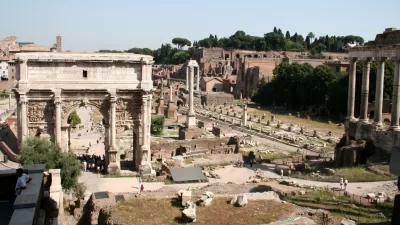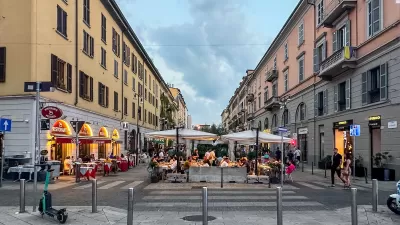In a globalized world, China's economic, environmental and urban development has implications for us all, posits Henry M. Paulson Jr. The problems the country faces, and any potential solutions, revolve around its approach to urbanization.
According to Paulson, the two pillars of growth that have driven China's economic emergence and global prosperity - investment and exports - are "delivering diminishing returns," He proposes that China adopt a new model for future success, “one that relies on consumption to generate growth, while addressing debt and broadening the use of sustainable energy and environmental practices.” Amid continued urbanization, the country's cities are key to this transformation.
Paulson highlights problems with China's local governance, construction industries and environmental factors, and illustrates how these affect the rest of world. For example, he points out, “[e]xperts found that dirty air from China contributed up to 20 percent of the ground-level pollution on the American West Coast in 2010.” China's air quality will only worsen as more of the hundreds of millions of Chinese consumers begin to own cars. To give a sense of its scale, Paulson writes, “[b]y 2025, China is projected to have a staggering 200 cities with populations over one million. America has just nine.”
For Paulson, cities are at the root of China's problems, as well as the source for solutions, especially now, as it experiences “its most severe economic downturn in decades." Chinese cities are home to hundreds of millions of consumers, often plagued by “debt, corruption and dissent," and responsible for producing “monster traffic jams and syrocketing pollution,” he explains. But, if China embraces new approaches and tools, including "instruction in sustainable practices for government leaders, public education in environmental issues and specialized training for the country’s urban planners,” it may be able to address the many issues it faces as it continues to urbanize.
FULL STORY: How Cities Can Save China

Planetizen Federal Action Tracker
A weekly monitor of how Trump’s orders and actions are impacting planners and planning in America.

Maui's Vacation Rental Debate Turns Ugly
Verbal attacks, misinformation campaigns and fistfights plague a high-stakes debate to convert thousands of vacation rentals into long-term housing.

San Francisco Suspends Traffic Calming Amidst Record Deaths
Citing “a challenging fiscal landscape,” the city will cease the program on the heels of 42 traffic deaths, including 24 pedestrians.

Defunct Pittsburgh Power Plant to Become Residential Tower
A decommissioned steam heat plant will be redeveloped into almost 100 affordable housing units.

Trump Prompts Restructuring of Transportation Research Board in “Unprecedented Overreach”
The TRB has eliminated more than half of its committees including those focused on climate, equity, and cities.

Amtrak Rolls Out New Orleans to Alabama “Mardi Gras” Train
The new service will operate morning and evening departures between Mobile and New Orleans.
Urban Design for Planners 1: Software Tools
This six-course series explores essential urban design concepts using open source software and equips planners with the tools they need to participate fully in the urban design process.
Planning for Universal Design
Learn the tools for implementing Universal Design in planning regulations.
Heyer Gruel & Associates PA
JM Goldson LLC
Custer County Colorado
City of Camden Redevelopment Agency
City of Astoria
Transportation Research & Education Center (TREC) at Portland State University
Jefferson Parish Government
Camden Redevelopment Agency
City of Claremont





























